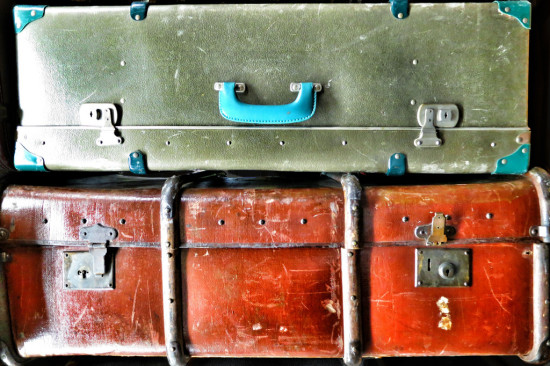Thanks to the introduction of the Pet Travel Scheme (PETS), it is now easier than ever to take your dog with you on your holiday. For keen travellers this opens up far more possibilities; where owning a dog may have held back travel plans in the past, now your pooch can be part of them. But it is not as simple as turning up at the airport or driving up the Eurotunnel terminal with your dog in tow – there are a few things you’ll need to take care of first.

- travel with dog Stuck in Customs / Foter / CC BY-NC-SA
The first is to satisfy the conditions of the Pet Travel Scheme, details of which can be found on the Department for the Environment, Food and Rural Affairs (Defra) website. This includes ensuring your dog has had all vaccinations – including rabies boosters and tapeworm treatment – and that it has a valid EU Pet Passport. With all this documentation your dog will then be free to travel with you.
Where can you go?
Under the PETS scheme, your dog can travel freely in the European Union, as well as to selected non-EU countries (check the Defra website for a full list).
How can you travel?
Dogs can be taken by plane with the PETS scheme, although you are bound to use an approved carrier for your animal. Dogs can also travel with you in your car via ferry and the Eurotunnel, but are not permitted on Eurostar train services (except assistance dogs).
Preparations you need to make
Ensure your comprehensive pet insurance covers you while you’re abroad – vet fees overseas can be huge, as is the cost of transporting a seriously sick pet back home.
Travelling can be difficult on dogs – especially active ones which are used to bounding around all day, so as well as fulfilling are the logistical requirements, you should make other preparations.
The first thing to do is go through your planned itinerary and establish how it will work with a dog. Obviously you’ll want dog-friendly accommodation, but think about places of interest you want to visit – will they allow dogs? What about restaurants? Beaches? You don’t want to get to your destination and then realise you have to make a choice between your pet and the things you want to see.
If you’re travelling by car, think about how you can keep your dog occupied during the journey. A pet seatbelt is advisable in case of accident, while the interior should be covered with blankets to protect the upholstery from fidgety dog paws. Chew toys to allow the dog to burn off some energy will also be a help, and remember to keep your pet well hydrated – dogs don’t like hot cars!



3 Comments
mercadeo internet
It is the owner’s responsibility, based on the regulations below to determine the correct sized travelling cage. As all dogs and cats are different sizes, we cannot advise you on what cage to obtain. If the cage is judged to be too small for your pet to safely travel onboard our flight, they will be refused travel.
ferienwohnungen in eisenach
Thank you sharing these kinds of wonderful content. In addition, the optimal travel as well as medical insurance strategy can often relieve those worries that come with travelling abroad. A new medical emergency can shortly become too expensive and that’s bound to quickly impose a financial burden on the family finances. Putting in place the great travel insurance offer prior to setting off is definitely worth the time and effort. Cheers
Jamie
You did not mention anything about pet quarantine. Does the insurance cover any problems that occur during quarantine? Not to spam you or anything I found an article http://2moveabroad.com/money-saving-tips-how-to-move-a-pet-abroad/ talks about costing you money of your pet gets stuck in customs or something happens.
Comments are Closed.